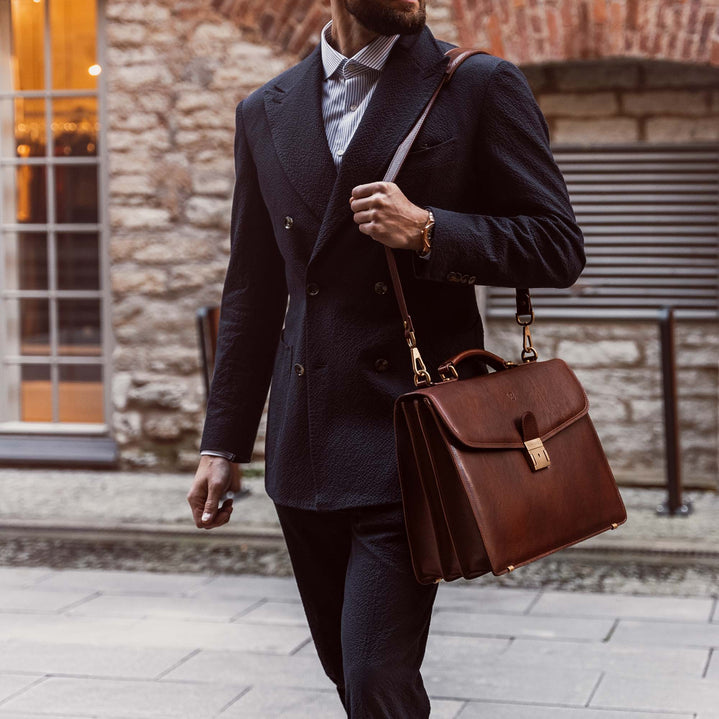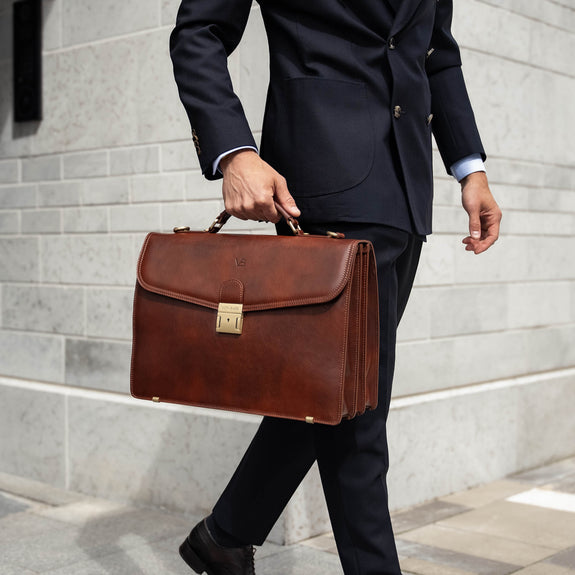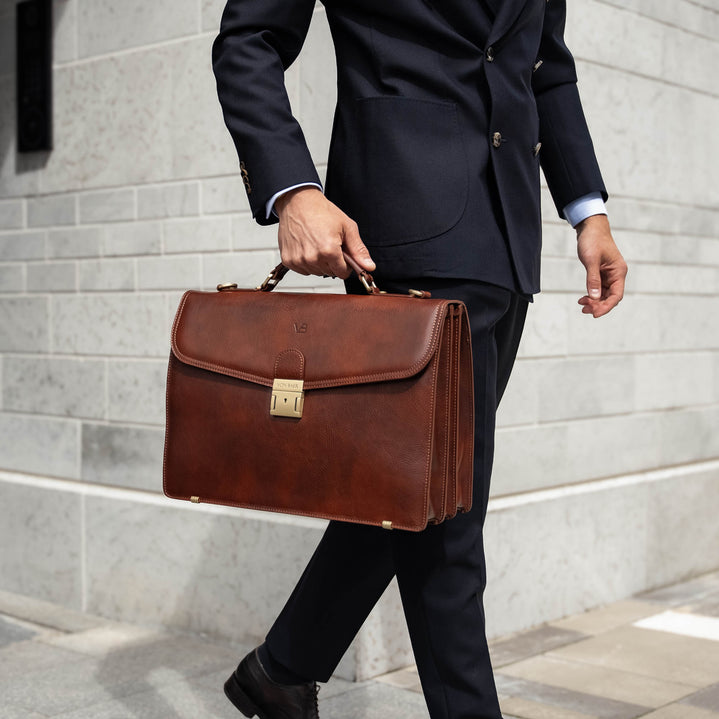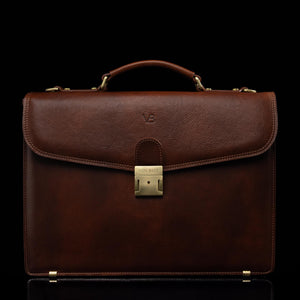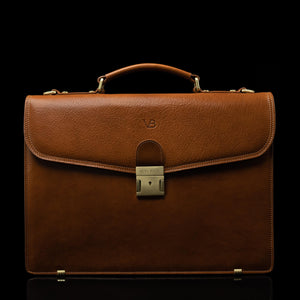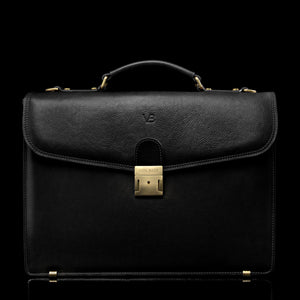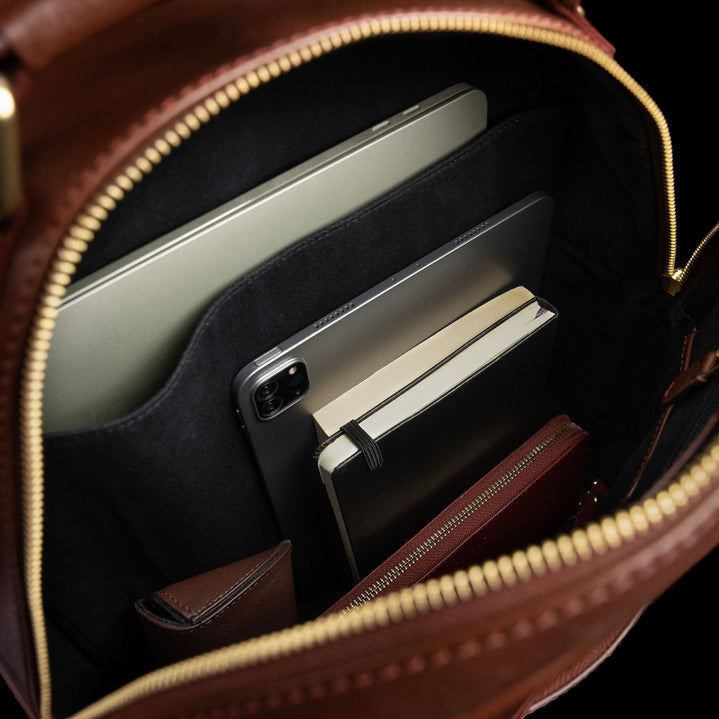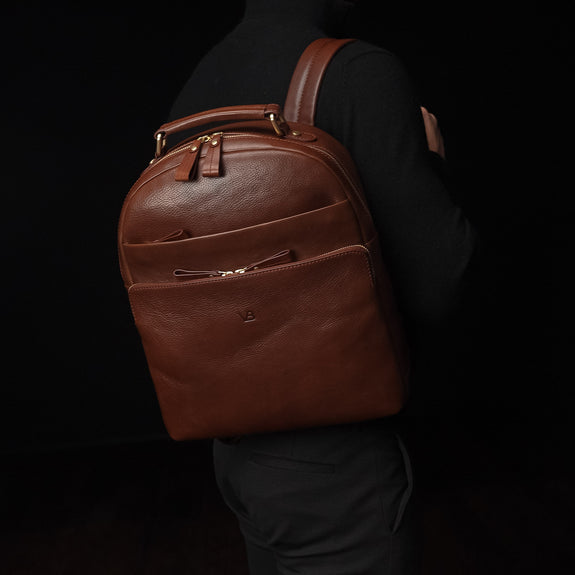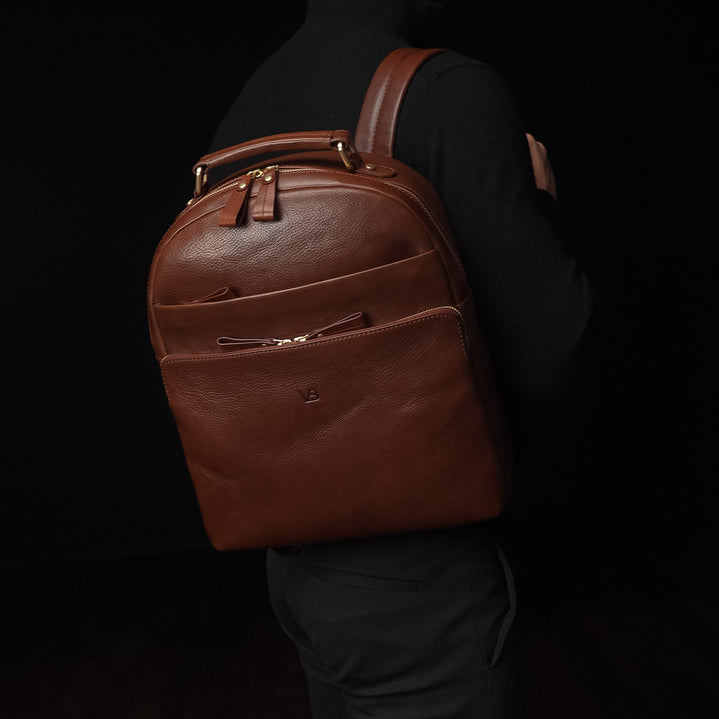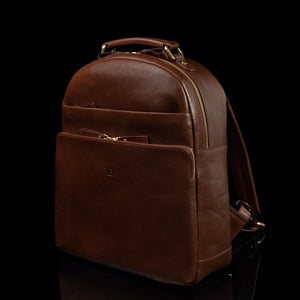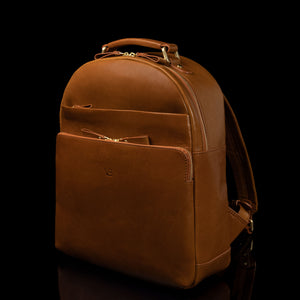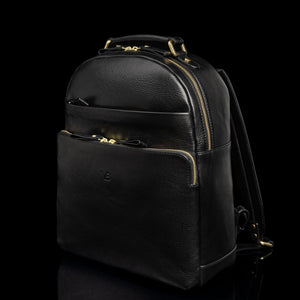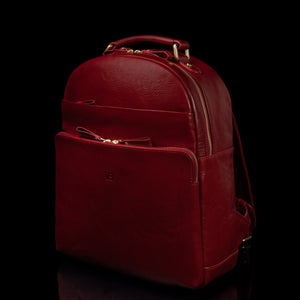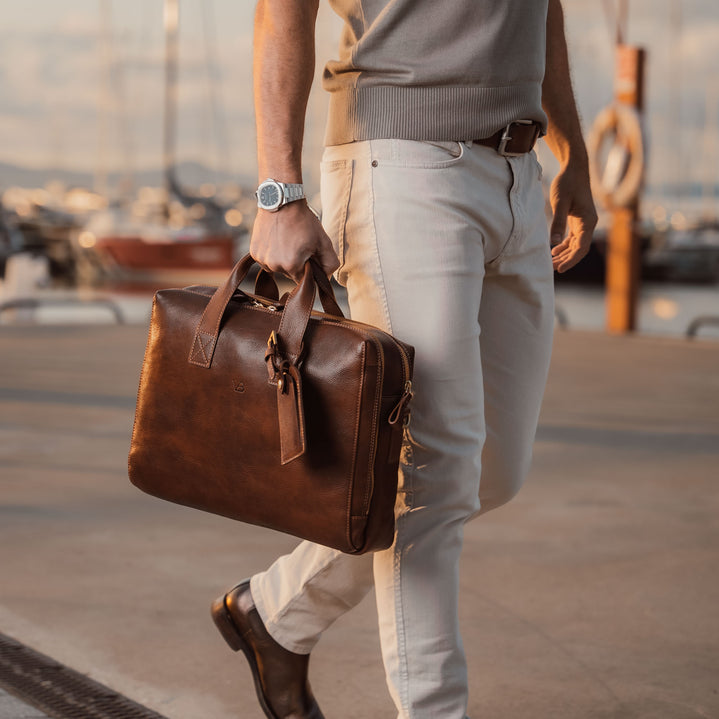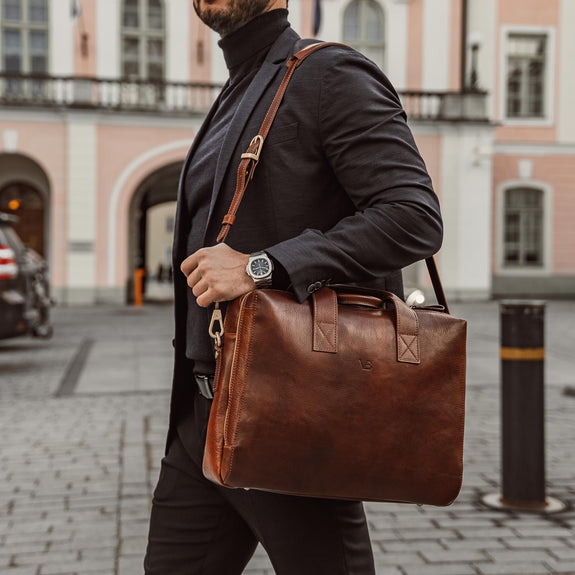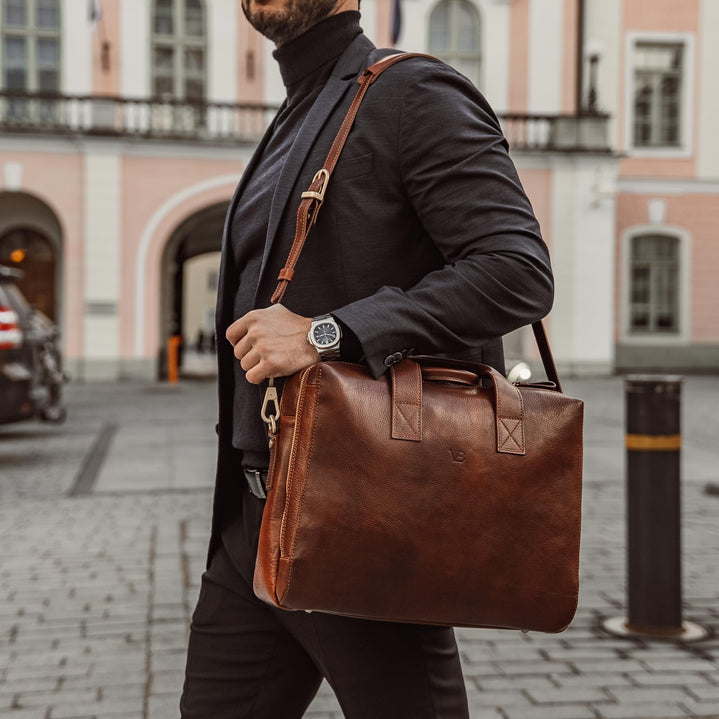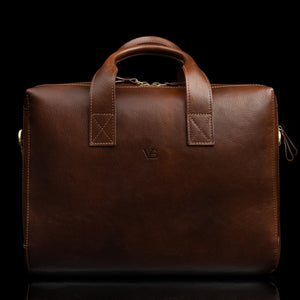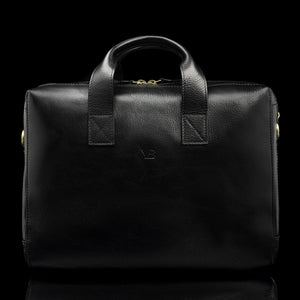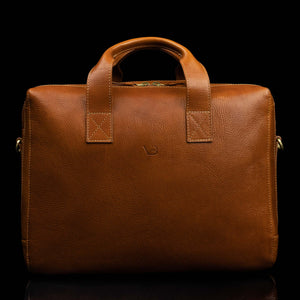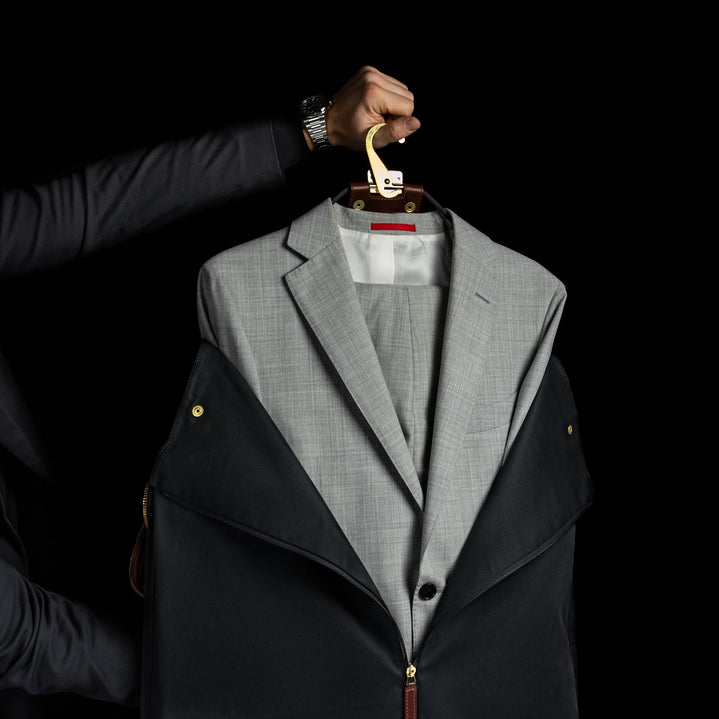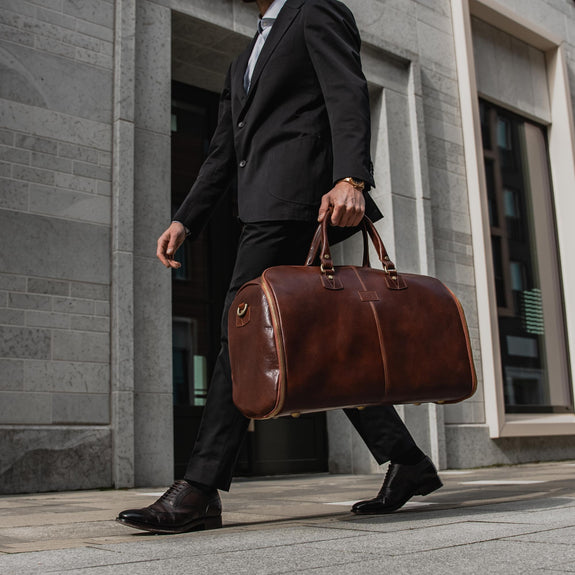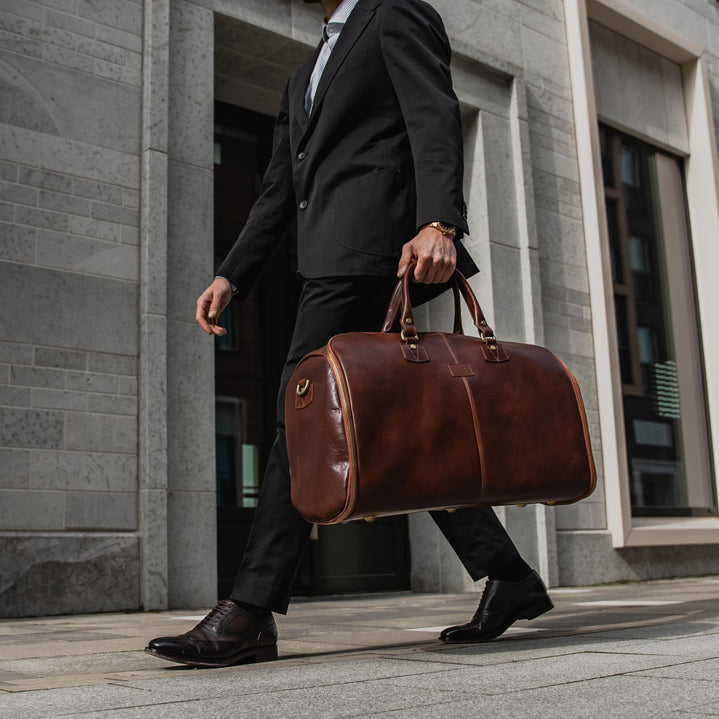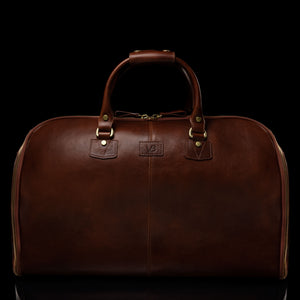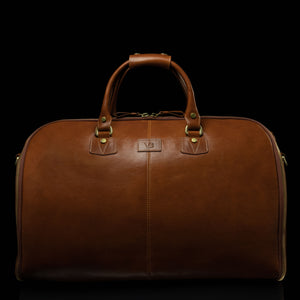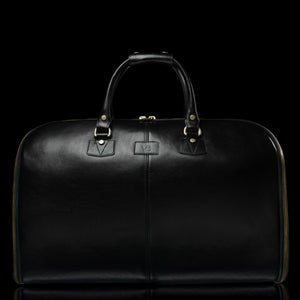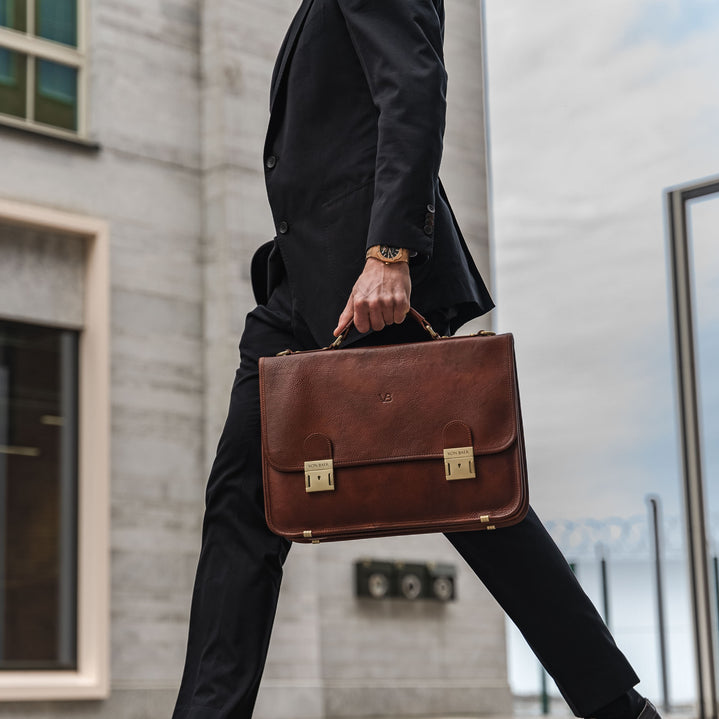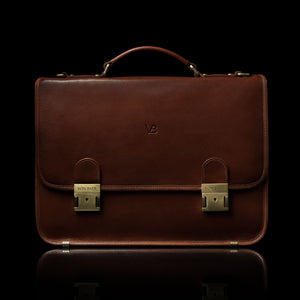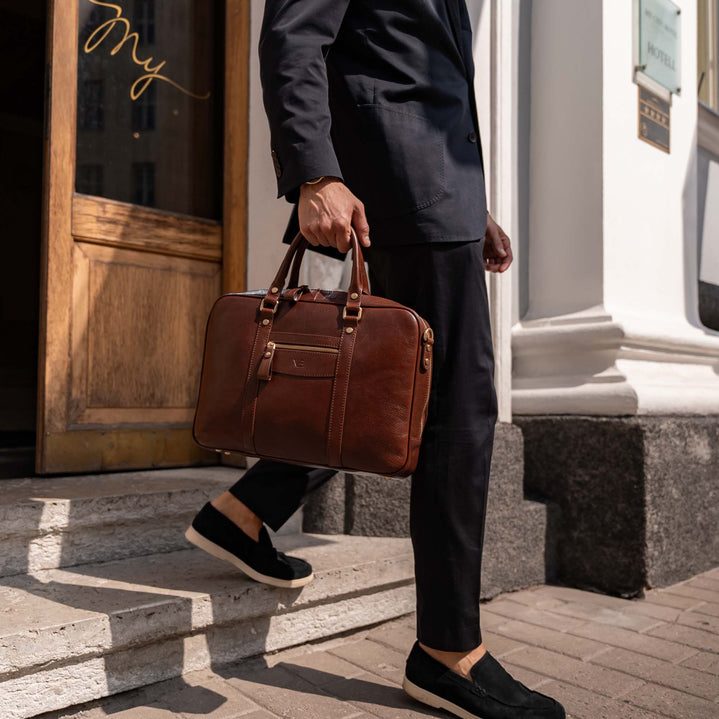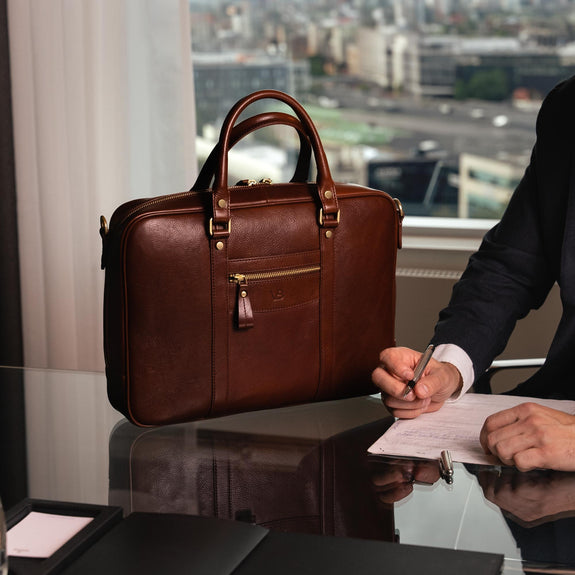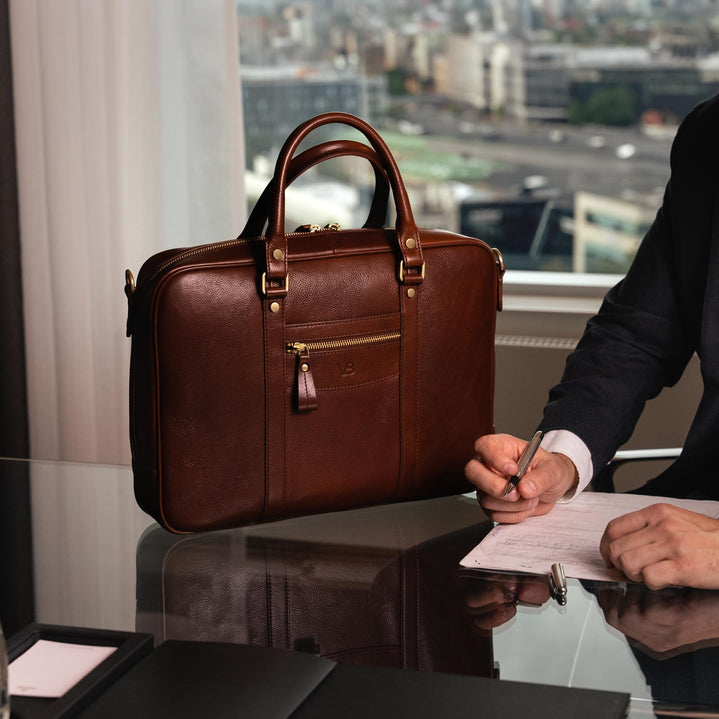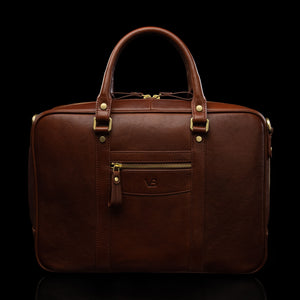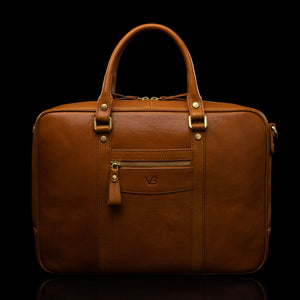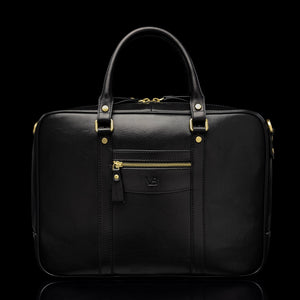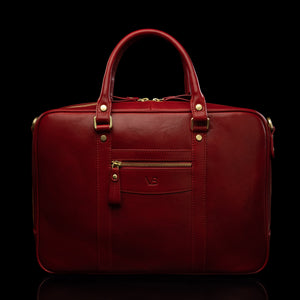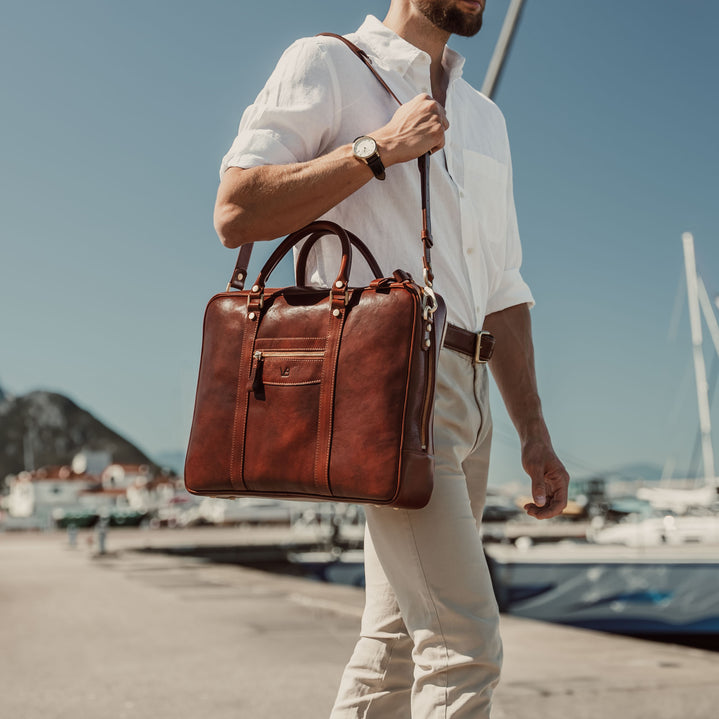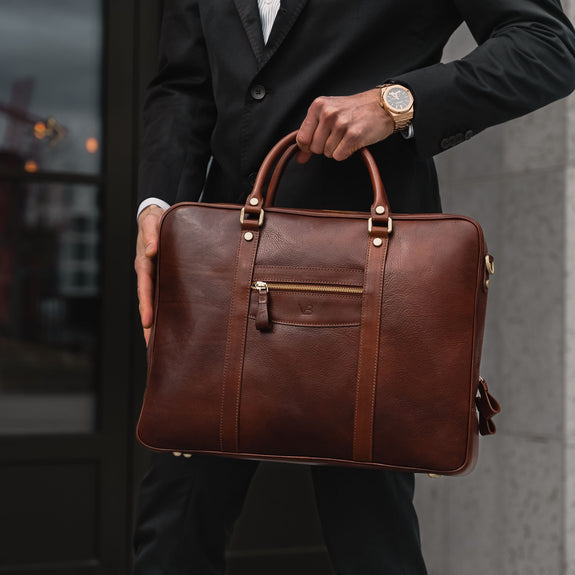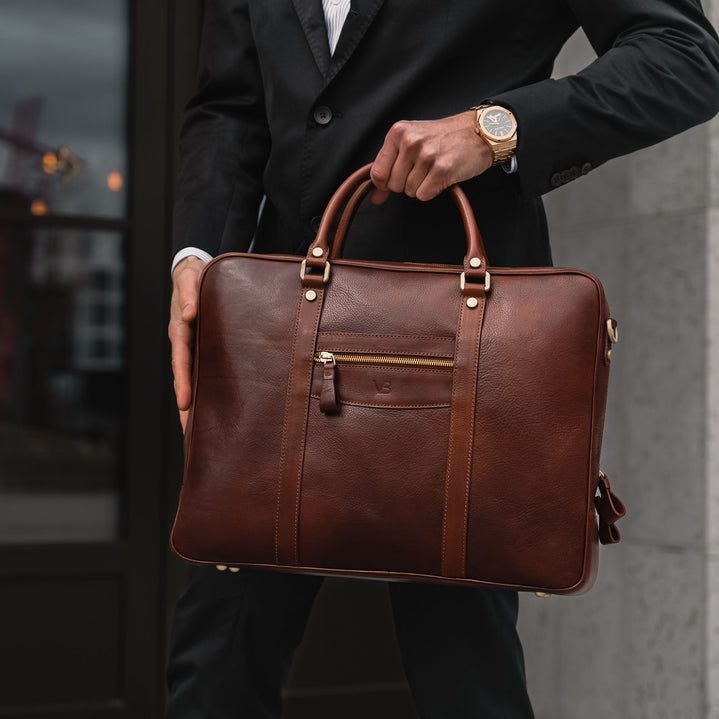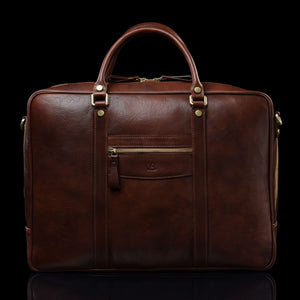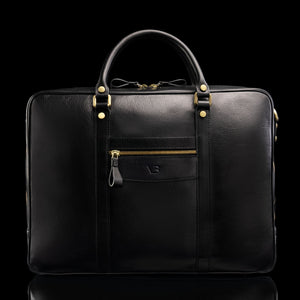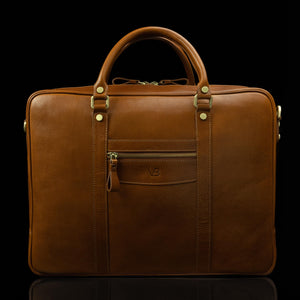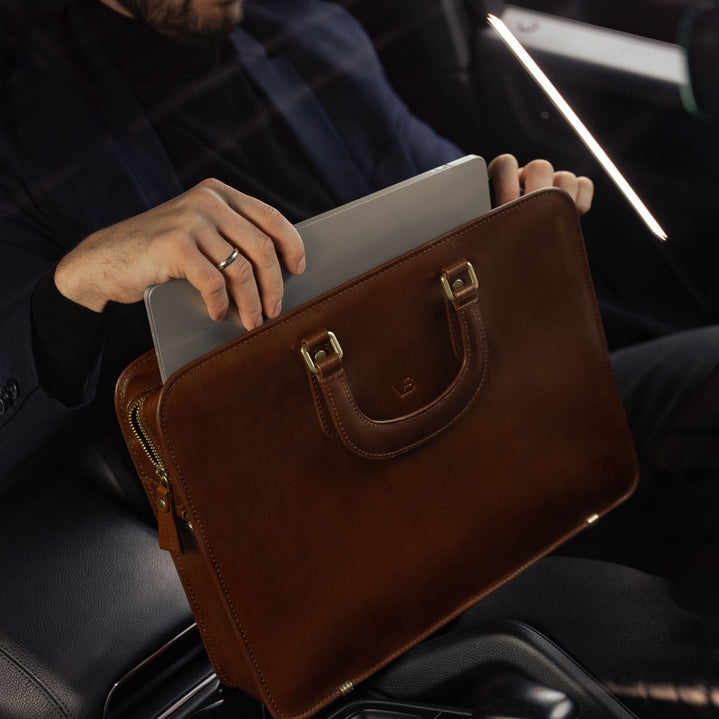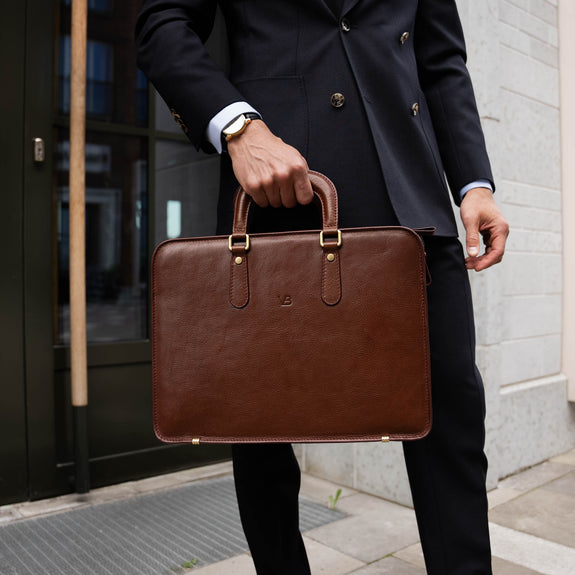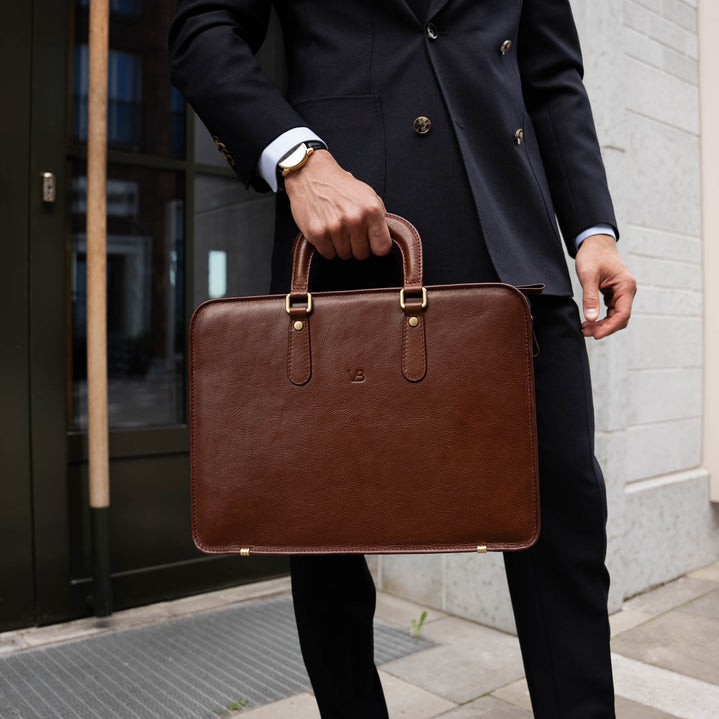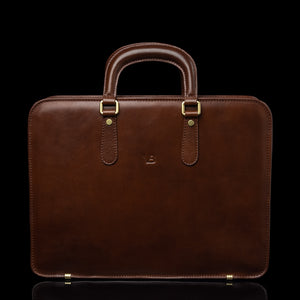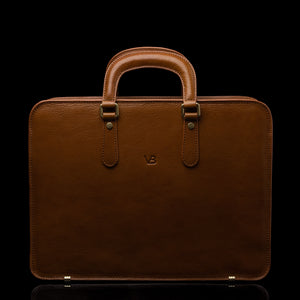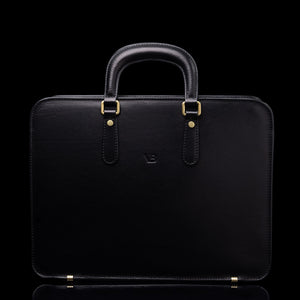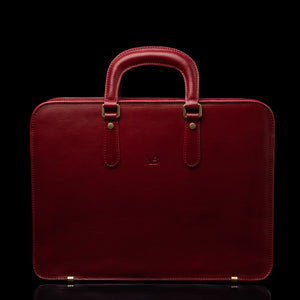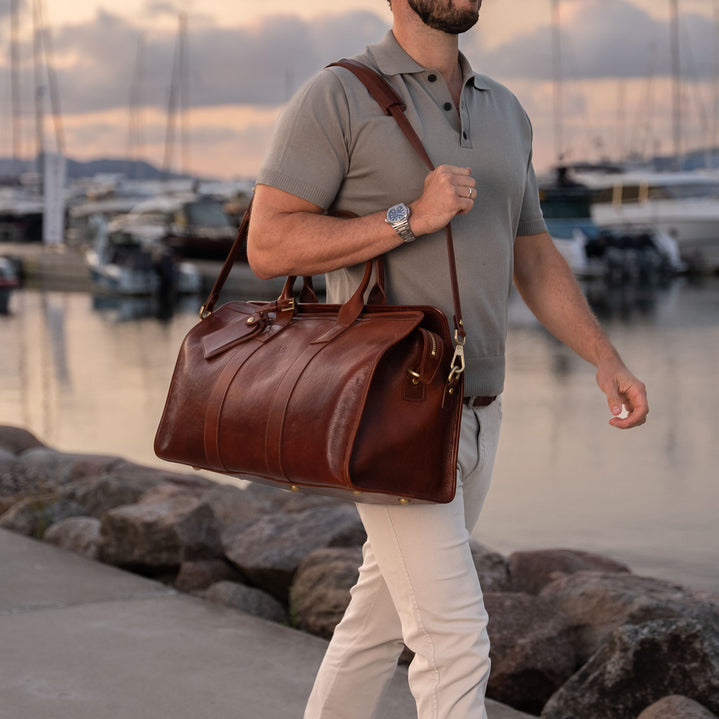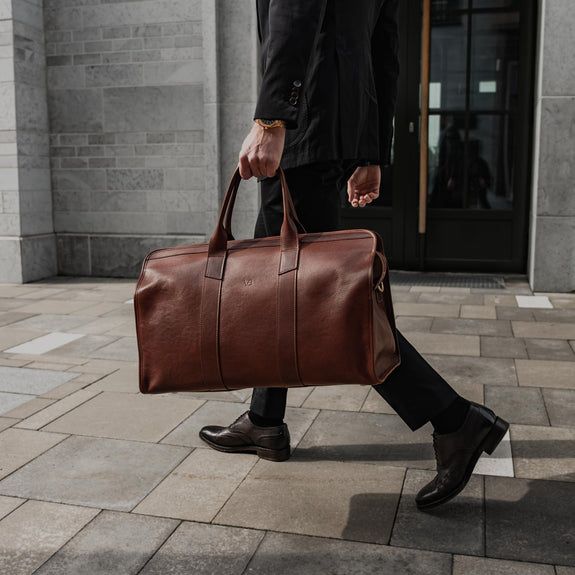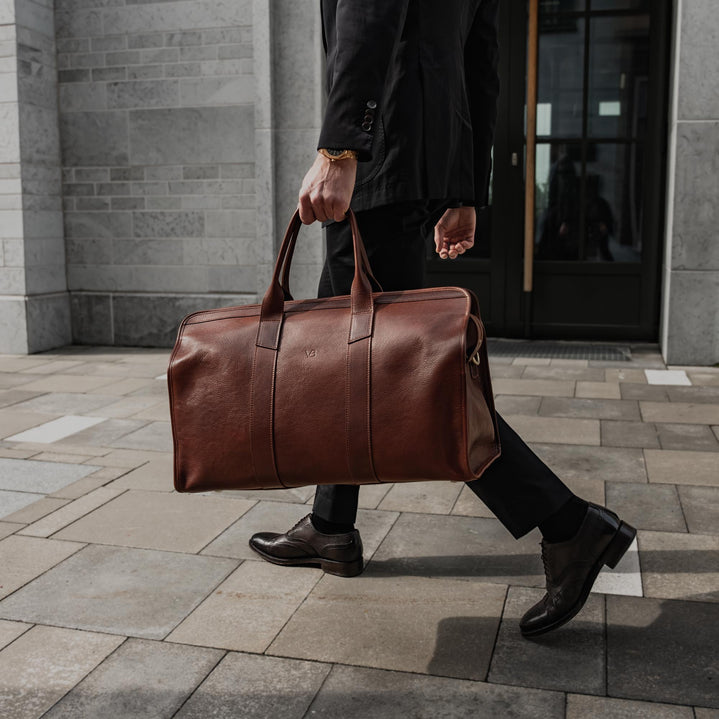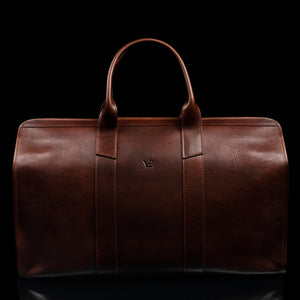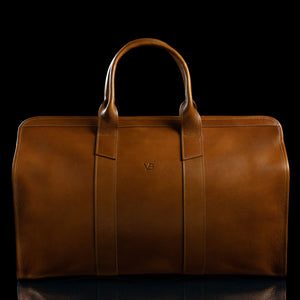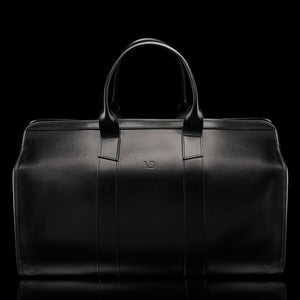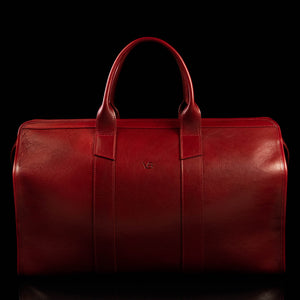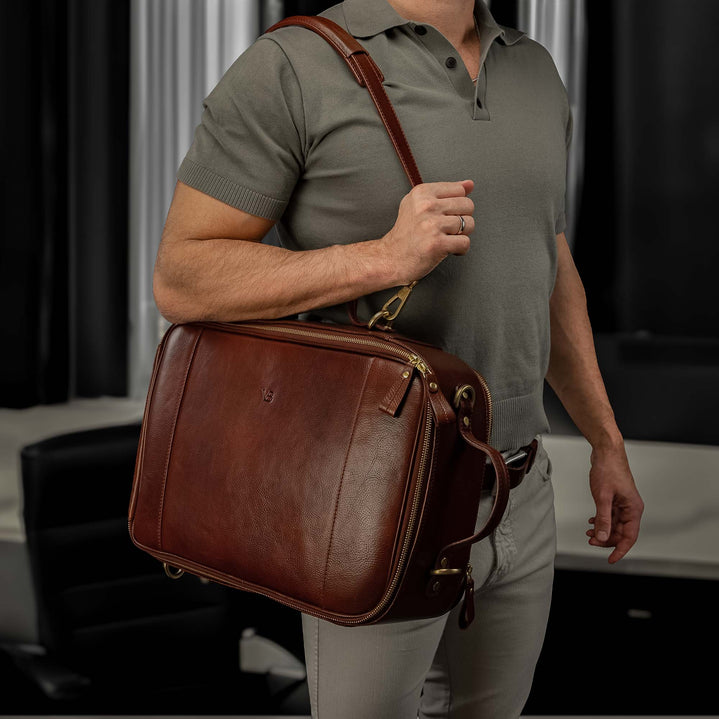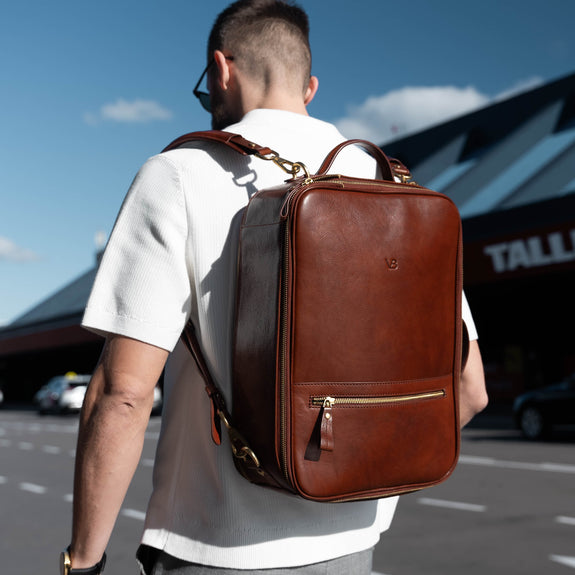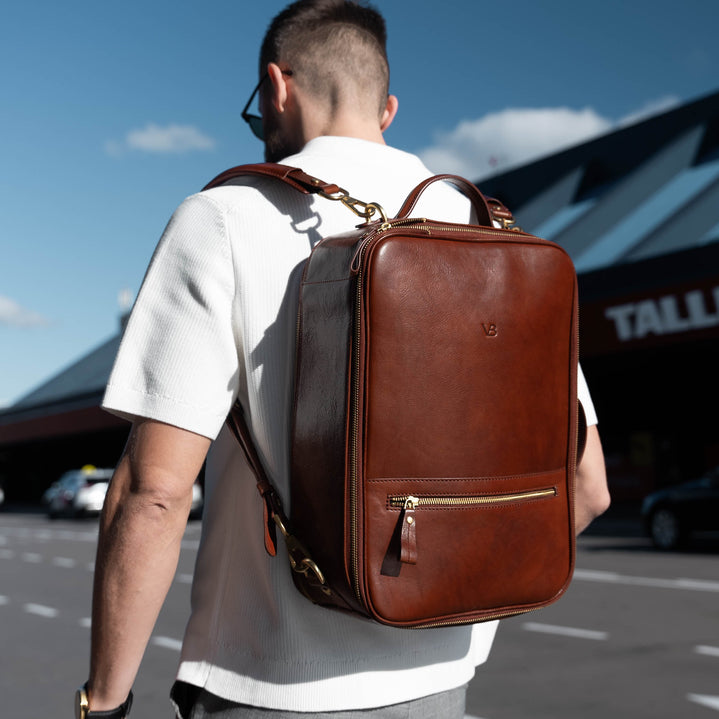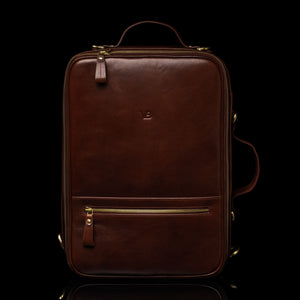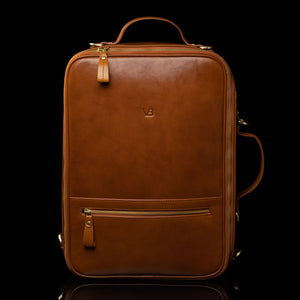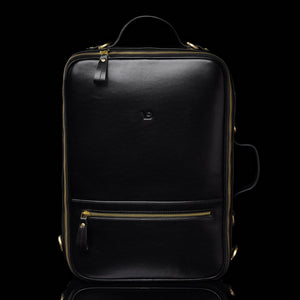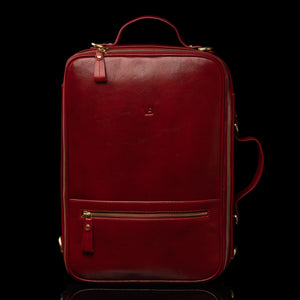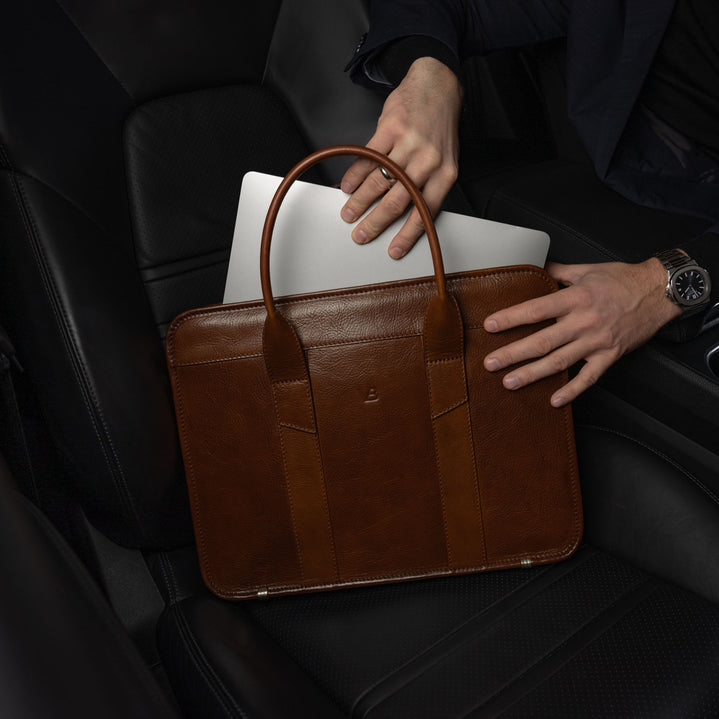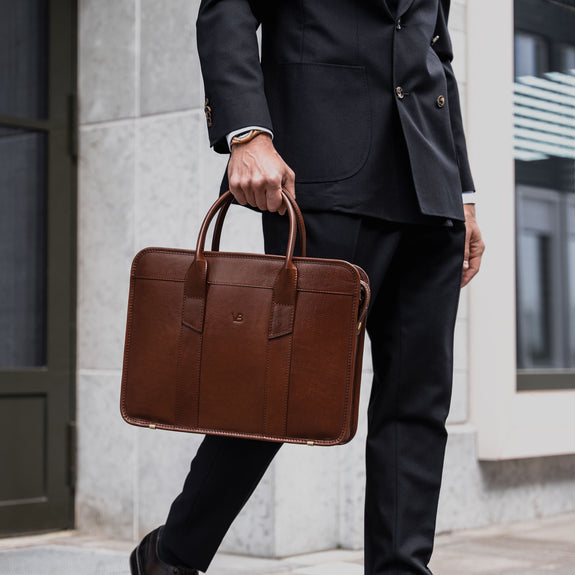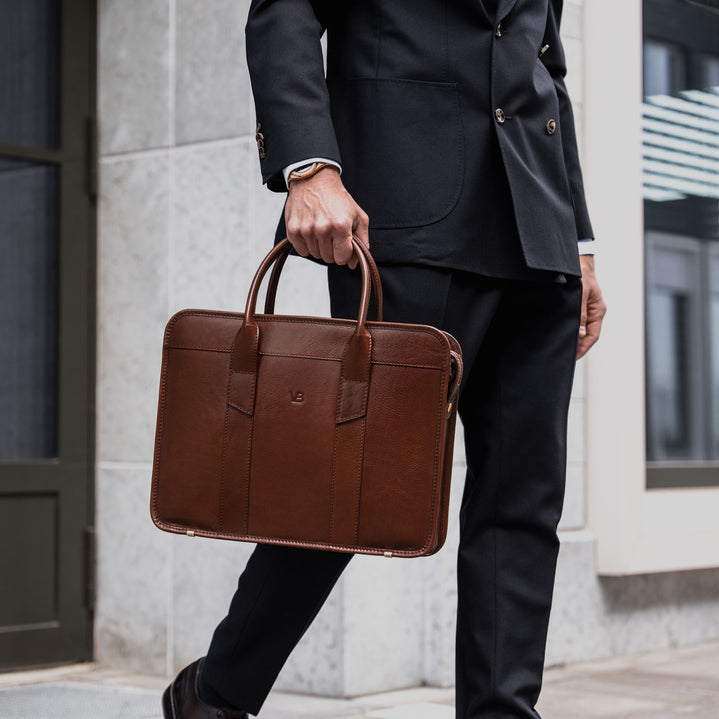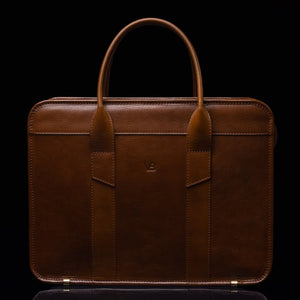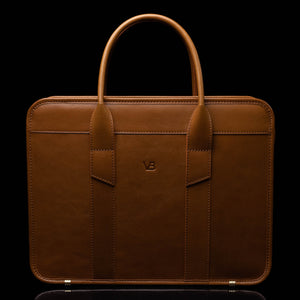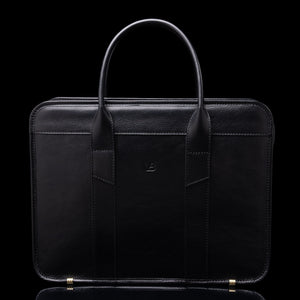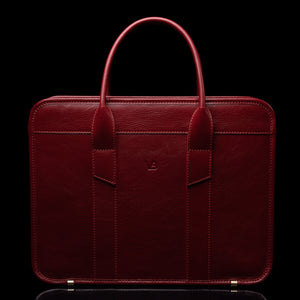Business Bags
Professional bags made for high stakes meetings.
Handmade from full-grain vegetable-tanned Italian leather.
No.1
Men's Leather Briefcase
$1,795
Liberty
Men's Leather Backpack
$1,495
Essential
Modern Briefcase
$1,495
Grand
Leather Garment Bag
$1,795
No.2
Leather Messenger Briefcase
$1,595
City
Leather Laptop Bag
$1,495
City Large
Leather Laptop Bag
$1,595
Elegant
Slim Leather Laptop Bag
$1,395
Weekender
Men's Leather Weekend Bag
$1,795
10X
Leather Laptop Travel Bag
$1,695
Exquisite
Slim Leather Laptop Briefcase
$1,495
AS FEATURED IN


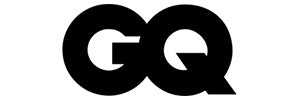

Why Choose Von Baer?

Expertly Handcrafted Leather Products

Full-Grain Vegetable-Tanned Italian Leather

Strong Hardware for a Lifetime of Use

Luxurious & Durable Cotton Lining

Personalize With Embossed Initials

Exquisitely Rich-Hued Leather for Refined Tastes
Buyer's Guide
The Business Essential You Didn’t Know Was Holding You Back
A tailored suit. A precise watch. A sharp mind. Every part of your professional arsenal plays a role in shaping how you move through the world. But what about the one item you carry into every meeting, onto every flight, and through every high-stakes negotiation?
If it’s slowing you down - too heavy, cluttered, or worn - it’s not just inconvenient. It’s costing you efficiency, credibility, and ease of movement.
The right bag doesn’t just transport your essentials; it streamlines your workflow, safeguards your investments, and conveys a level of refinement that no words can match.
Why Most Business Bags Fail When It Matters Most
A well-built enterprise demands efficiency. That principle extends beyond operations and investments - it applies to what you carry. Too many bags promise durability but collapse under daily use. Others look refined at first, only to scuff, sag, or lose their structure within months.
Common pitfalls include:
- Subpar materials - Many bags use "genuine leather" , a misleading term that refers to chemically treated scraps. These deteriorate rapidly, cracking and peeling after exposure to moisture and friction. Full-grain vegetable-tanned leather, on the other hand, develops a patina - subtle shifts in color and texture that enhance character over time (which is why we use it here at Von Baer). Opt for hides at least 1.5mm thick, ensuring a robust feel and natural resistance to wear.
- Flimsy construction - Stressed seams, glued edges, and weak handles are early warning signs. A high-quality bag is stitched with marine-grade polyester or waxed thread, typically 0.6mm - 0.8mm thick , ensuring longevity even under weight.
- Poor weight distribution - A well-structured bag aligns with ergonomic balance. The ideal weight range for an empty briefcase should be between 3.5 to 5.5 lbs (1.5 to 2.5 kg) to ensure portability without compromising durability.
- Disorganized interiors - If finding your pen takes longer than forming your next thought, the bag is working against you. Compartmentalized interiors - dedicated slots for devices, documents, business cards - should allow single-handed access. A well-designed bag will offer at least 4–6 internal compartments , including a padded laptop sleeve, zippered security pockets, and an external quick-access slot.
Three years ago, at a high-stakes investor meeting in Manhattan, a CEO unzipped his bag to pull out a final presentation printout. The seams along the interior pocket had torn just enough to let a few loose pages slide down into the lining. A quiet muttered curse later, he was pulling at the fabric, trying to dig them out. The room sat in awkward silence for what felt like an eternity before he finally found them, slightly crumpled and missing a page. The delay wasn’t catastrophic, but it wasn’t forgotten either. His competitor, seated just a few feet away, opened a structured briefcase with a single motion and placed a pristine, well-organized folder on the table. No distractions, no wasted time. If you think people don’t notice the small things, think again.
How to Instantly Spot True Craftsmanship
Luxury isn’t a label - it’s a process. The difference between mass-market goods and pieces designed to last decades is in the details.
Leather Quality: The Quick Test
Run your fingernail lightly across the surface. If the mark remains, then slowly fades as the oils redistribute, that’s full-grain leather. If the mark sits on top without disappearing, it’s likely coated or synthetic.
Premium hides come from top-tier tanneries - Badalassi Carlo (Italy), Horween (USA), or Tanneries Haas (France) - where vegetable tanning techniques preserve natural texture and integrity. If the material feels overly smooth or uniform, it’s probably corrected leather , which has been sanded down and coated to hide imperfections, at the expense of durability. Look for thickness ratings between 1.5mm to 2.0mm for full-grain leather bags - thinner leathers below 1.2mm often lack structure and durability.
Stitching & Construction: The 60-Second Assessment
Hold the bag at eye level and check the seam alignment. Misaligned stitching or uneven edges indicate machine-based mass production. Luxury-grade alternatives use saddle stitching, a technique that interlocks two separate threads for unmatched strength. If one stitch breaks, the entire seam does not unravel, unlike cheaper lock-stitch alternatives.
Test the handles. Press down where they meet the body - if they shift or creak, the attachment points are weak. Handles should be reinforced with at least two layers of leather and secured by hand-stitched bar tacking to withstand stress.
Examine the hardware. Zippers should glide effortlessly, ideally YKK Excella or Riri Swiss - hand-polished for a frictionless experience. Look for solid brass or stainless steel hardware, as plated zinc alloys degrade over time. Snap closures should withstand at least 15,000 open-close cycles without failure.
Tip: If the interior lining is nylon or polyester , reconsider. Cotton twill, suede, or lambskin interiors signal a higher level of craftsmanship, ensuring that even the inside of the bag ages gracefully.
At Charles de Gaulle Airport last spring, a businessman in a rush to catch his connection reached for the worn leather messenger bag slung over his shoulder. As he stepped onto the moving walkway, the shoulder strap detached with a sharp snap. His laptop tumbled out, sliding across the floor as stunned passengers turned their heads. He grabbed for it, but it was already too late - the case had split on impact. By the time he arrived at his meeting in Zurich, he was scrambling to recover files from a backup drive instead of walking in prepared. That strap had failed at the worst possible moment - not because of an accident, but because the attachment points had been machine-stitched rather than reinforced by hand. A bag isn’t just about carrying what’s inside - it’s about ensuring that what’s inside stays protected, no matter what the day throws at you.
The Perfect Balance of Form and Function
An exquisite aesthetic means nothing if the layout works against you. A disorganized bag slows you down in ways you won’t notice - until you do. The key is intuitive design.
The Right Compartments Make You More Efficient
A structured interior prevents the “black hole” effect - where everything sinks to the bottom in an unmanageable heap. Essential elements include:
- A padded laptop sleeve - Ensure it’s lined with microsuede or felt to prevent scratches. Look for a sleeve that fits devices up to 16 inches while maintaining a snug fit.
- Divided document sections - Ideal for keeping business proposals crisp rather than creased. Opt for sections at least 10 inches wide to comfortably fit legal-sized documents.
- Quick-access exterior pockets - Perfect for passports, ID, or subway cards, avoiding delays at security checks. A pocket at least 6 inches deep is ideal for easy retrieval.
- Hidden compartments - RFID-blocking slots prevent digital theft during international travel. A good RFID pocket should shield at least 13.56 MHz frequencies, covering credit cards and passports.
The best test? Pack your daily essentials and go through a simulated workday. If retrieving a business card takes more than two seconds , it’s not an efficient design.
Choosing the Right Type for Your Work Style
Different industries, different demands. The ideal choice depends on how and where you operate.
- Briefcase – The gold standard for investment banking, corporate law, and executive leadership . Opt for a model with dimensions around 16” x 12” x 4” for the right balance of capacity and slimness.
- Tote – A refined yet flexible option, blending luxury with accessibility. Ideal dimensions fall around 18” x 14” x 6” to accommodate versatility without excessive bulk.
- Messenger – A more relaxed alternative, hands-free for tech entrepreneurs, journalists, and professionals constantly in motion . Look for an adjustable strap with at least 2 inches of width to distribute weight comfortably.
The Silent Power of Understated Design
True luxury pieces use:
- Tonal embossing – Textures that signal sophistication without overt logos.
- Minimal hardware – A brushed gunmetal finish ages better than polished chrome, which can develop fingerprints.
- Exquisite finishing – Piped edges and burnished corners, which add structure retention over years of use.
What Separates an Investment from an Expense?
A bag that outlasts trends isn’t just an accessory—it’s an asset.
- High-quality materials get better with age. Inferior alternatives deteriorate.
- Smart craftsmanship prevents replacements. A well-made design negates the need for frequent upgrades.
- A refined appearance pays dividends in perception. A scuffed, misshapen piece works against you.
How Is Von Baer Leather Different?
Not all leather is the same.
Since 2015, we at Von Baer have dedicated ourselves to high-quality real leather.
Here's a 30-second summary of how to choose a better leather product:
- Leather comes in different grades: full-grain, top-grain, and split/bonded - which represent how much of the original product is used (less product used = cheaper).
- Full-grain is the best grade of leather you can buy: exceptionally durable, developing an elegant patina, and having that beautiful real leather smell.
- Cheaper grades are less durable, age poorly, and don't have that authentic scent.
- Leather is processed through "tanning", which makes it durable and water-resistant.
- The two main methods for this are "vegetable-tanning" and "chrome-tanning".
- Chrome tanning uses harsh chemicals that are bad for the environment and produce a worse quality leather.
- Vegetable tanning is the best method, being more eco-friendly, and producing leather with a better patina and scent.
That's why here at Von Baer, we only use full-grain vegetable-tanned Italian leather, sourced from the finest tanneries across Tuscany, Italy.
It ages beautifully over time, developing a unique patina, making it more durable and luxurious than lower-quality leather.
It's also why we developed the leather standards trademark Cuoio Superiore (meaning "superior leather" in Italian).
Learn more about Von Baer here.

